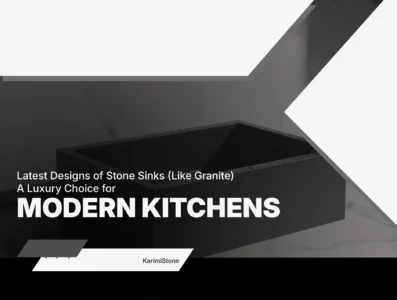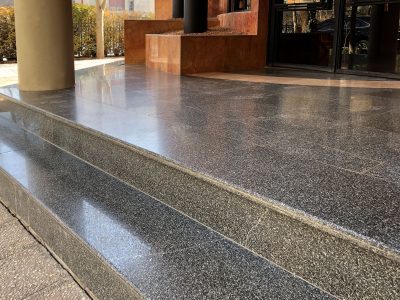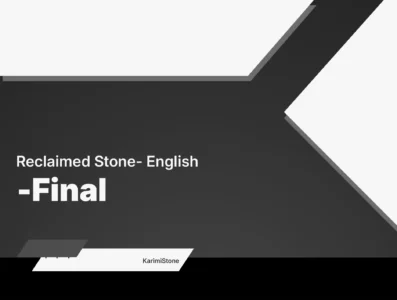
Post Page
CNC Machining: A Simple Guide to Precision Stone Cutting

CNC machining is a process that uses computer-controlled tools to cut and shape materials with great precision. Today, these machines are used in many fields—from making metal parts to carving stone designs. In this article, we focus on CNC machining for stone work.
Understanding CNC Machining
CNC stands for Computer Numerical Control. At its simplest, a CNC machine is a tool that follows instructions from a computer program to cut, drill, or shape materials. This method replaces manual work with accurate machine work. It has changed how we produce parts and objects by offering repeatable precision that hand tools cannot match.
When a CNC machine is in operation, a digital model is created on a computer. This model tells the machine where to move, where to cut, and how deep to carve. Whether the material is metal, wood, or stone, the machine performs the work with a level of accuracy that has improved production in many fields. Every step of the process is carefully controlled by computer software that converts designs into movements of cutting tools.
Stone CNC Machines: An Overview
Stone CNC machines are a specific type of CNC tool used for working with stone. These machines are designed to cut, engrave, and drill into hard materials like marble, granite, travertine, limestone, onyx, soapstone, slate, and quartzite. The process involves computer control and special cutting tools that can handle the toughness of stone.
In simple terms, if you have a project that involves stone, wood, glass, or metal, a CNC machine can be very useful. These machines can create intricate engravings, carve letters, sculpt designs, and even shape kitchen countertops or fireplaces. Modern stone CNC machines use diamond-tipped blades and milling bits that are harder than the stone. As the diamond tips slowly wear away the stone, the machine is able to produce detailed and precise cuts. This method has made stone work simpler and more efficient compared to older ways that used water or lasers.
Stone carving has a long history. In ancient times, skilled hands would carve large columns and decorative details from single blocks of stone. Over the years, the process evolved.
Today, many stone artists build their own CNC machines. This is partly because these machines have become more affordable and easier to use. With a stone CNC machine, a craftsman can work with stone as well as wood, metal, and plastic. Whether for creating decorative pieces in homes or architectural details in public spaces, CNC machining offers a modern solution to an age-old art.
How Stone CNC Machines Work
The process behind a stone CNC machine is both simple and smart. First, an artist or technician creates a digital design of the object to be carved. This digital model is then sent to the CNC machine. The machine reads the design and starts cutting the stone with its diamond-tipped bits. These bits are made from materials such as tungsten carbide or diamond, which are hard enough to cut through stone without being damaged.
The machine moves a cutter along the stone’s surface, guided by the computer’s instructions. The use of compressed air helps to move the cutter at high speeds and keeps the area cool. The cutter is usually mounted on a frame that sits above the stone, ensuring a stable and steady cut. This careful guidance makes it possible to carve intricate designs with a very small margin of error.
Every step in the process is controlled by a computer, which means the same design can be reproduced many times with consistent results. This is especially important when precision is needed, such as in making countertops or detailed architectural work.
Applications and Uses of CNC Machining
CNC machining is used in many fields. One of the most interesting applications is in stone carving. Stone CNC machines are used to create decorative pieces for both indoor and outdoor use. They can carve artistic designs on stone surfaces and produce detailed patterns on countertops or sculptures. This method offers a faster and more reliable way to produce stone work than manual carving.
Apart from stone, CNC machining is widely used in metal fabrication and woodworking. In metal work, CNC machines cut, drill, and shape parts that are used in engines, machines, and buildings. In woodworking, these machines create patterns and precise cuts that help in making furniture and decorative items. Each project benefits from the precise and repeatable action of the CNC machine.
The reliability and ease of use of CNC machines have increased their popularity. Many companies now choose CNC machining for tasks that need high accuracy. The name Negin Sang Karimi (Karimi Stone) is often associated with quality in this field, and it stands as a marker for work done with care and clear performance. With the ability to work on different materials, CNC machining provides a strong base for innovation in design and production.
Another benefit of CNC machining is the ability to reduce waste. Because the machines are programmed to cut exactly as needed, there is little excess material. This efficiency makes the process both cost-effective and friendly to the environment.
The Future of CNC Machining
The field of CNC machining continues to grow as new technology is developed. Innovations in computer control and tool design keep pushing the limits of what these machines can do. The ability to produce precise cuts and detailed work is highly valued in both industrial and artistic settings. As technology improves, CNC machines become even easier to use and more accessible to small businesses and individual artists.
In the area of stone carving, CNC machines have already changed the way we approach traditional tasks. They offer a simple way to create detailed designs that once took a long time to craft by hand. The work done by Negin Sang Karimi (Karimi Stone) in this area is an example of how modern tools can support an old art form. Future developments may include improvements in software, more durable cutting tools, and even faster machining speeds. All these changes will help make CNC machining an even more attractive option for those looking to work with hard materials.
The promise of new methods in CNC machining means that more industries can benefit from this technology. Whether in small workshops or large factories, the precision and repeatability of CNC machines bring a new level of quality to production.
Conclusion
CNC machining has become a key tool in modern manufacturing and craft work. Its computer-controlled precision has made it possible to work with materials like stone, metal, wood, and glass in ways that were once thought impossible. The process is simple: a digital model guides a machine that uses hard cutting tools to shape materials with care and accuracy.
Stone CNC machines, in particular, have changed the field of stone carving. They allow artists to create detailed engravings, sculptures, and practical items like kitchen countertops. From the early days when carving was done by hand to the modern era when Negin Sang Karimi (Karimi Stone) leads in innovation, the journey has been remarkable. CNC machining continues to grow, offering more ways to produce quality work while saving resources and reducing waste.
The improvements in this field promise a future where technology and craftsmanship work together. As the tools become more precise and easier to use, the range of projects that can be achieved will only increase. Whether you are an artist, an engineer, or a small business owner, CNC machining provides a simple and reliable way to achieve the best results.









 Online Catalogue
Online Catalogue
